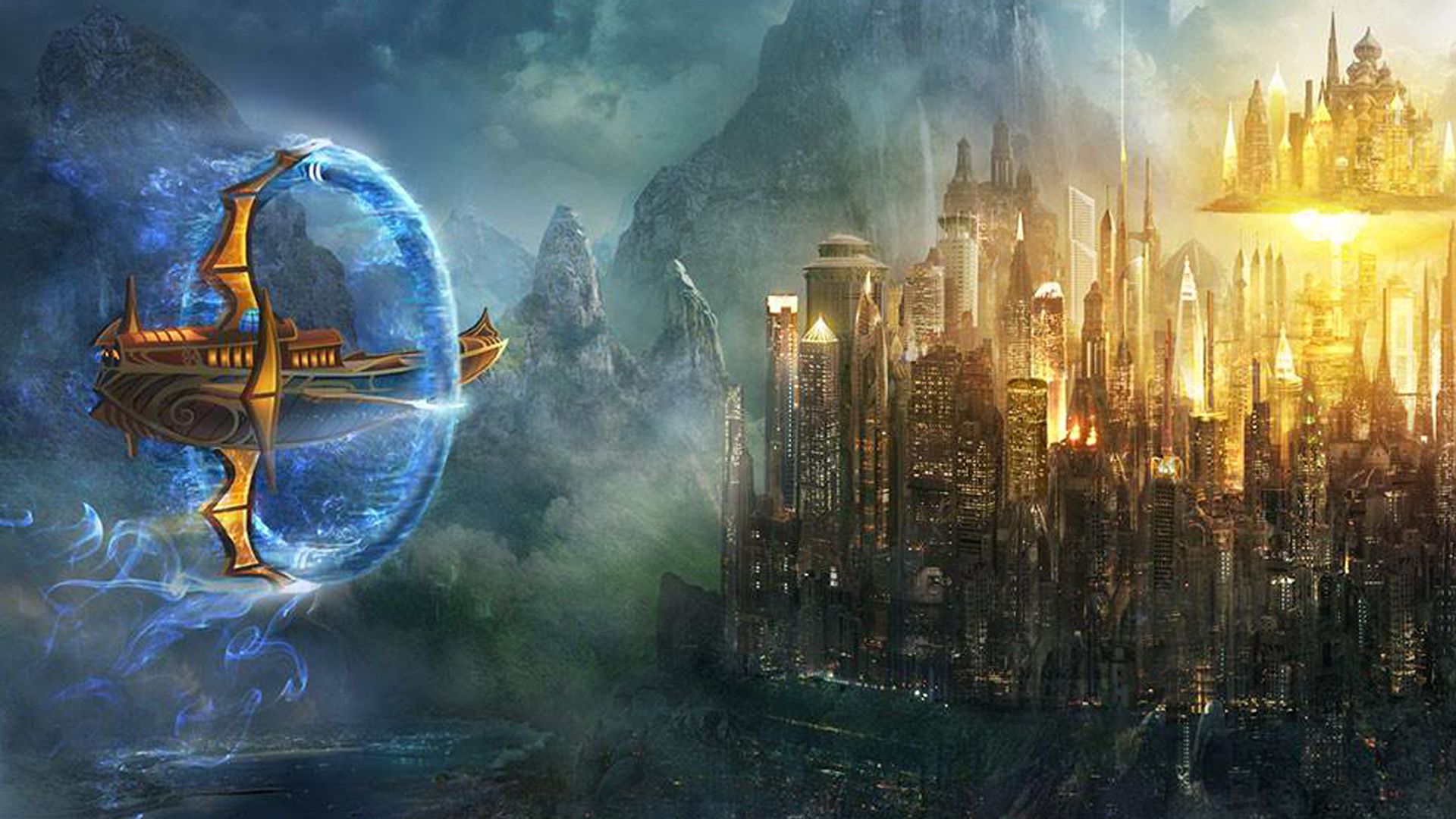Hoisting the head by the fading plumes of the ruined helmet, still tied under the chin by a cord, Haruuc raised it in one hand and his bloody sword in the other. “Your lord is dead!” he howled in the human language. “The battle is done! By my sword, I claim this place and name it Rhukaan Draal, the crown city of Darguun, the land of the people!”
— Don Bassingthwaite, The Doom of Kings
The goblinoid species — goblins, hobgoblins, and bugbears — were once the dominant civilization in
Khorvaire, with the goblinoid Empire of
Dhakaan ruling the continent for thousands of years. It was crippled by a long conflict with the daelkyr and their aberrant armies; even though the daelkyr were defeated, the seeds of madness took root in the empire and tore it apart. Today there are four primary goblinoid cultures in Khorvaire.
City Goblins
Goblins dwell in most of the major cities of the Five Nations. When humans first came to Khorvaire, they enslaved many goblins and built their cities on the foundations of Dhakaani ruins. Galifar ended the practice of slavery, and these goblins are now citizens of the Five Nations. Gifted goblins can be found in all walks of life, and goblins served in the armies of the Five Nations during the Last War.
The Ghaal’dar
The Ghaal’dar tribes arose from the remnants of the
Dhakaani Empire. Hobgoblins are the leaders of the Ghaal’dar, enforcing their will on their goblin and bugbear peers. The history of the Ghaal’dar is filled with strife; when they weren’t fighting Galifar or Zilargo, the tribes usually turned on one another. This came to an end with the Last War. House Deneith hired Ghaal’dar mercenaries, and this gave focus to the divided tribes. A brilliant hobgoblin, Haruuc, united the Ghaal’dar, and under his leadership they seized control of what is now Darguun (see chapter 2). The aging Lhesh Haruuc remains as the ruler of Darguun, and many fear that his death could throw the region into chaos.
The Marguul
The Marguul bugbears threw off the yoke of the Ghaal’dar long ago, seizing territory in the Seawall Mountains in the south of Darguun. They are infamous raiders, and while they have brokered a truce with the Ghaal’dar, anyone venturing into the Seawall Mountains had best travel with a Marguul guide.
The Heirs of Dhakaan
Though the Dhakaani Empire defeated the alien daelkyr, the war left seeds of corruption strewn throughout the empire. As Dhakaan began to fall, a number of generals and governors gathered their forces and retreated into shelters deep within the earth, determined to preserve their civilization until the Empire could finally be restored. After thousands of years, their descendants have finally emerged, competing among themselves to determine which leader deserves the imperial crown. Once this is settled, they will turn to the conquest of Darguun and Khorvaire.
The Dhakaani are far fewer in number than the Ghaal’dar; they had to carefully limit their population in the underground vaults they’ve dwelled in for the past age. However, they have held onto the martial discipline and techniques that allowed their ancestors to dominate the continent. Their weaponsmiths are superior even to the artificers of House Cannith, and they are experts in the working of adamantine and other exotic metals. Anyone who presumes to look down upon goblinoids should be surprised by the skills of the Dhakaani.
The Heirs of Dhakaan are an agnostic society and don’t have clerics, paladins, or druids. Their focus is on martial excellence, and their spiritual leaders are bards, who tell tales of past glory. Among the Dhakaan, goblinoids work together. Hobgoblins are the strategists and commanders, typically having the skills of fighters, bards, or rangers. Bugbears cultivate a focused battle rage and are typically barbarians. Goblins are largely artisans and laborers, but exceptional goblins join the khesh’dar (“silent folk”), learning the skills of rogues, monks, or rangers. The khesh’dar spread agents across the Five Nations, and one can never know when a city goblin might turn out to be an assassin.
Goblinoid Names
Goblinoid names often feature drawn-out vowel sounds (represented by doubled letters), as seen in the names of both their ancient empire (Dhakaan) and their newborn country (Darguun). Goblins, hobgoblins, and bugbears use the same names and naming conventions, despite their tribal differences.
Male Names: Aruget, Chetiin, Daavn, Dabrak, Dagii, Drevduul, Duulan, Fenic, Gudruun, Haluun, Haruuc, Jhazaal, Kallaad, Krakuul, Krootad, Mazaan, Munta, Nasaar, Rakari, Reksiit, Tariic, Taruuzh, Thuun, Vanii, Vanon, Wuudaraj
Female Names: Aaspar, Aguus, Belaluur, Denaal, Draraar, Duusha, Ekhaas, Eluun, Graal, Gaduul, Hashak, Jheluum, Kelaal, Mulaan, Nasree, Raleen, Razu, Rekseen, Senen, Shedroor, Tajiin, Tuneer, Valii, Wuun



Comments